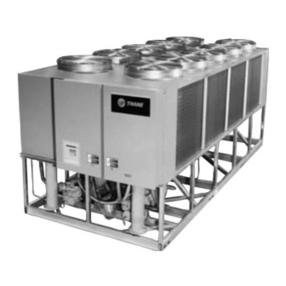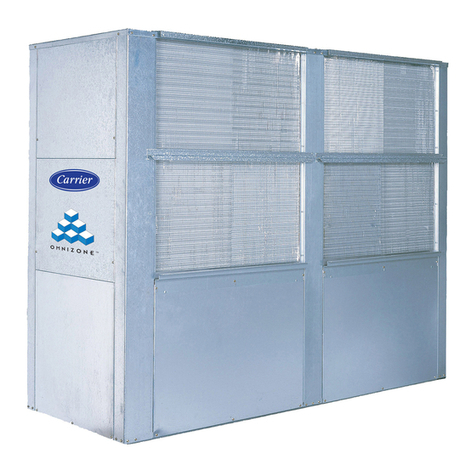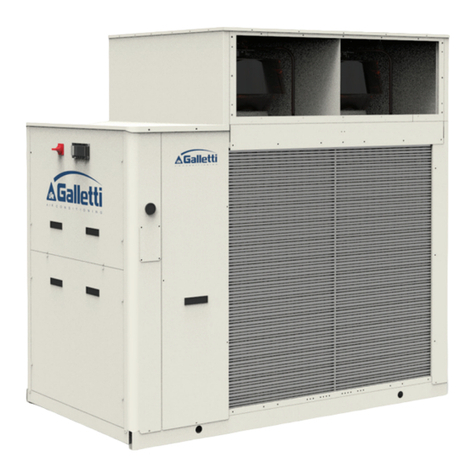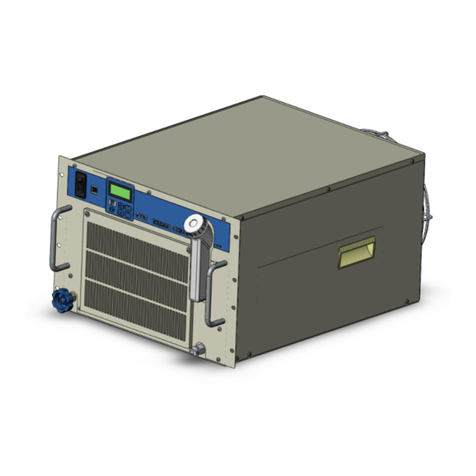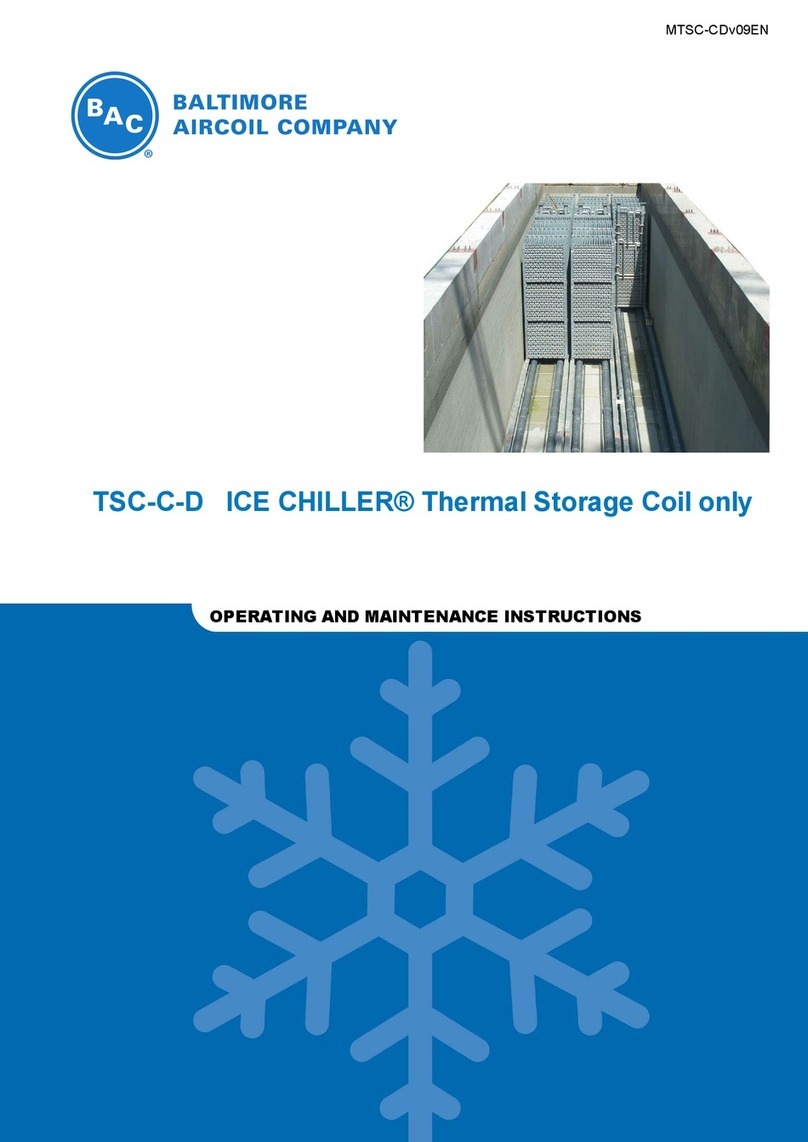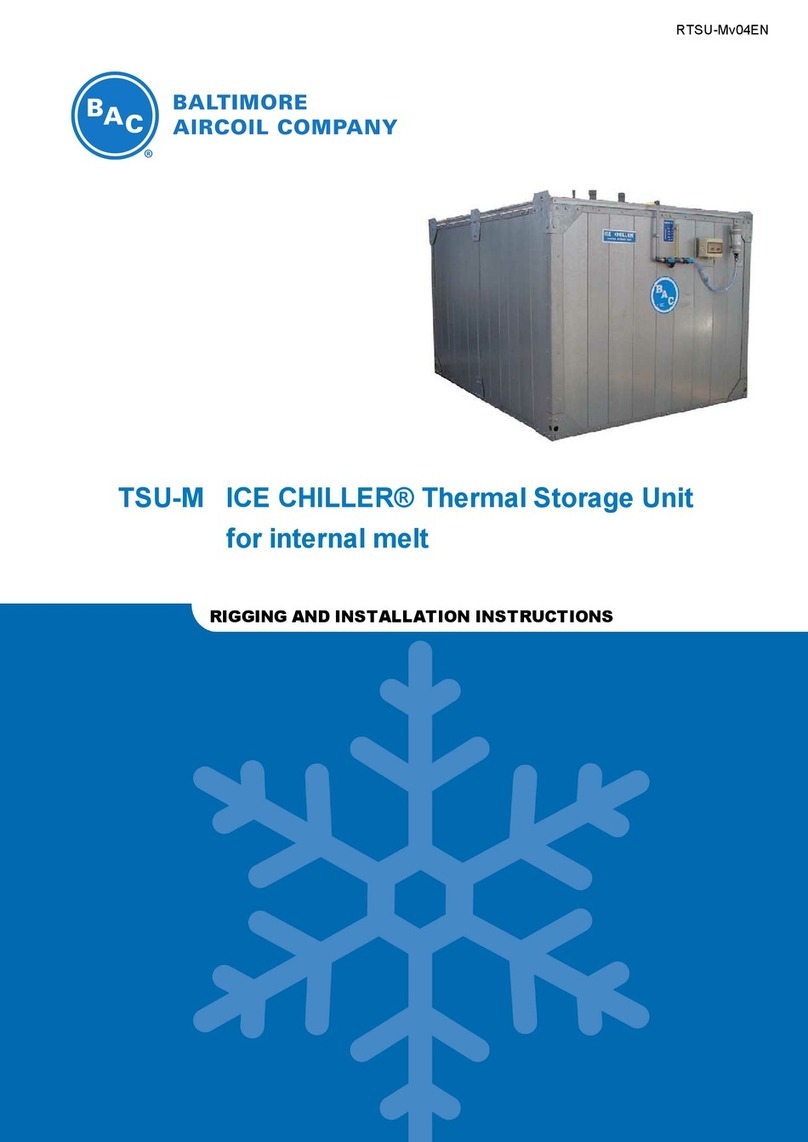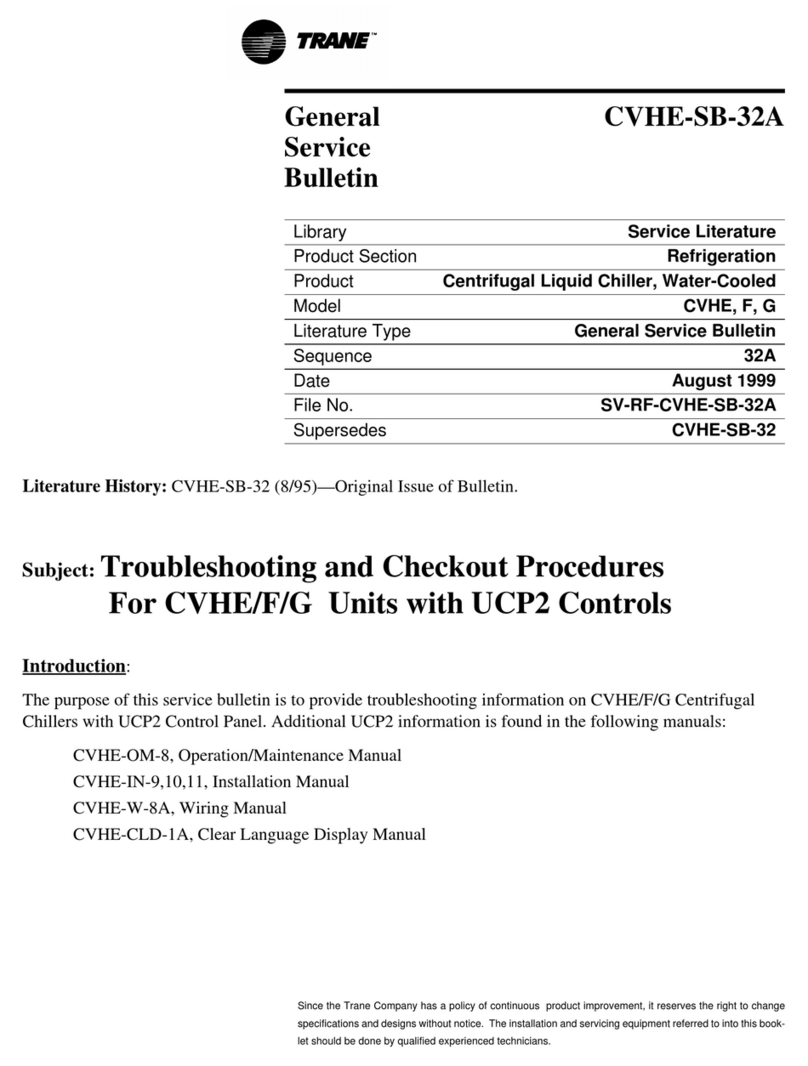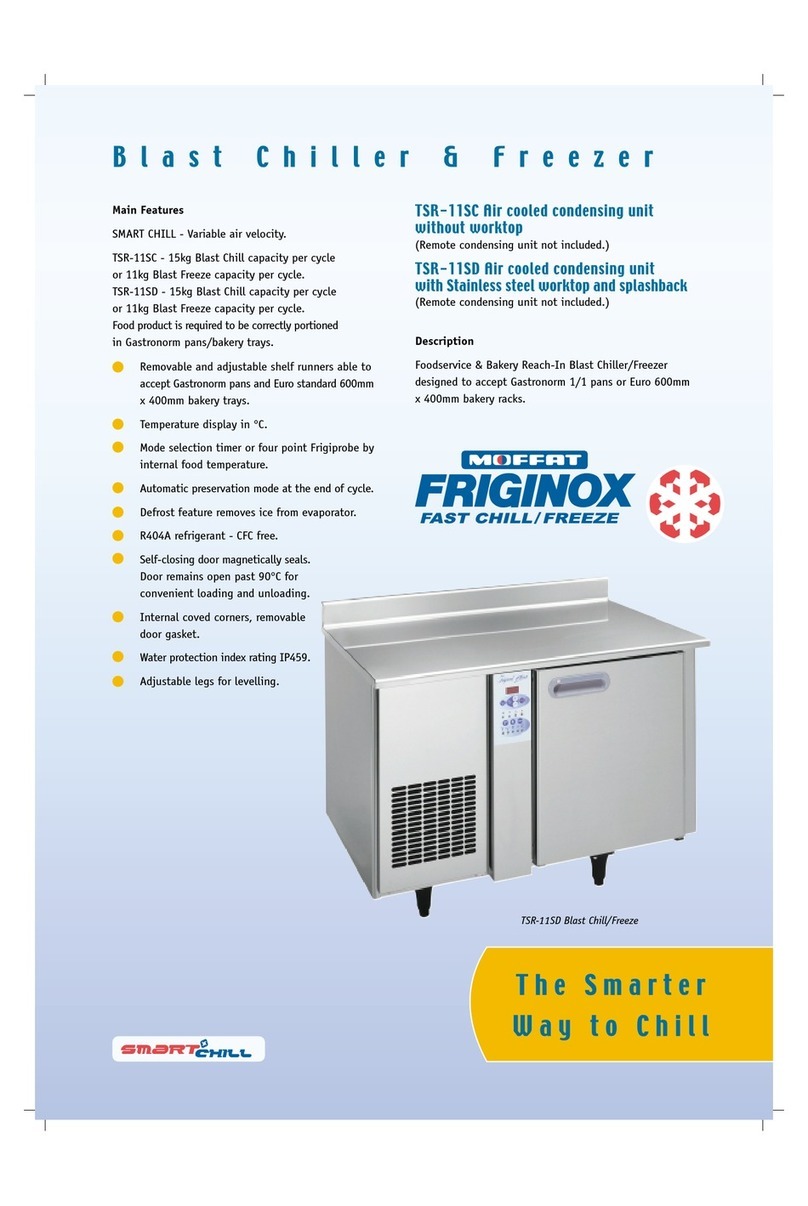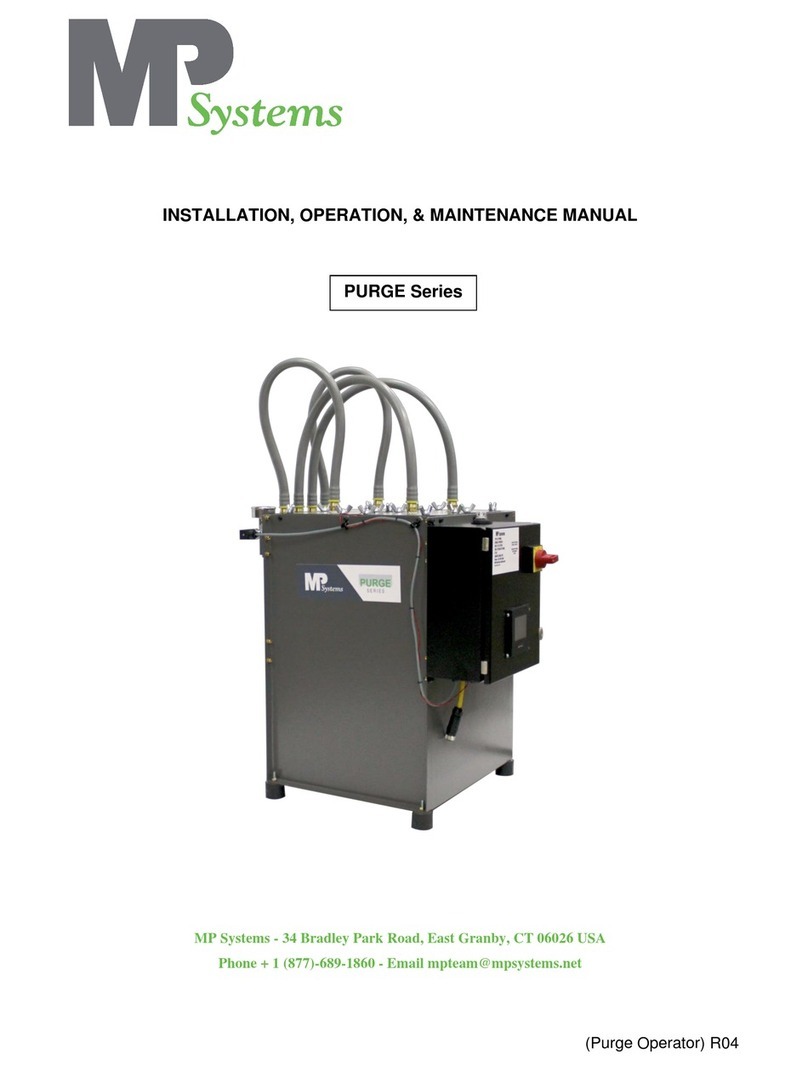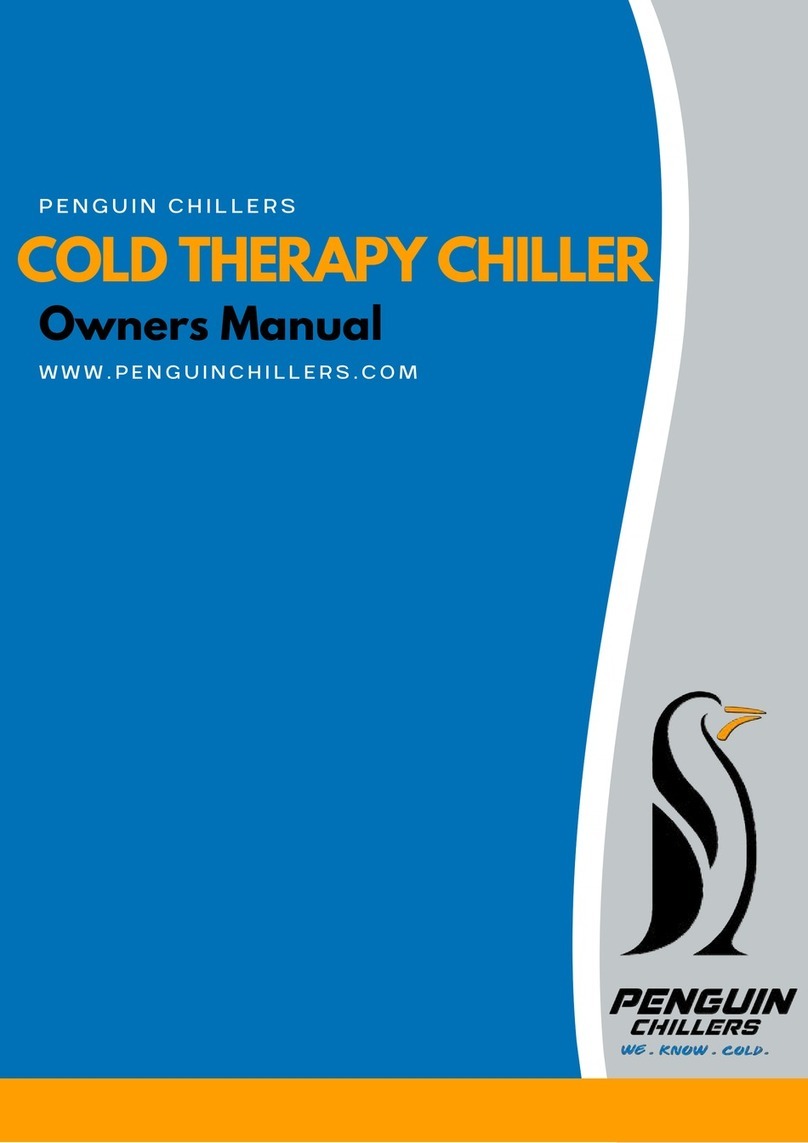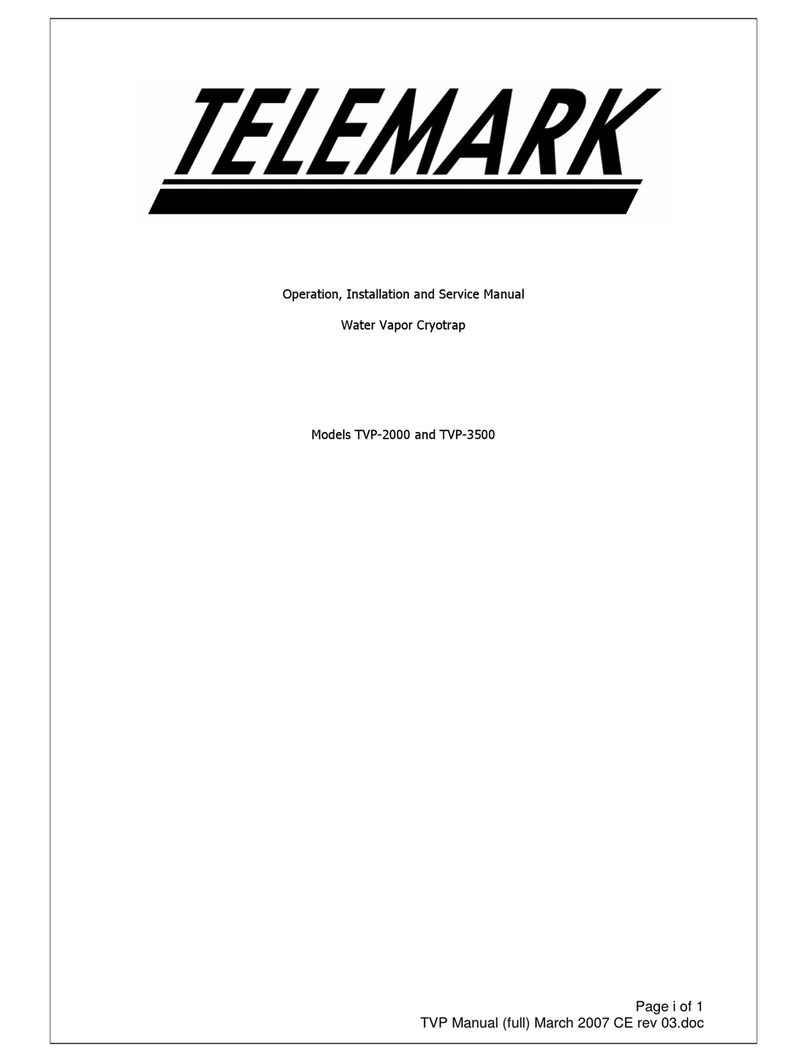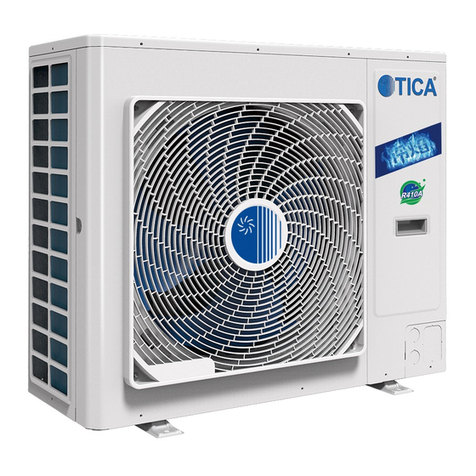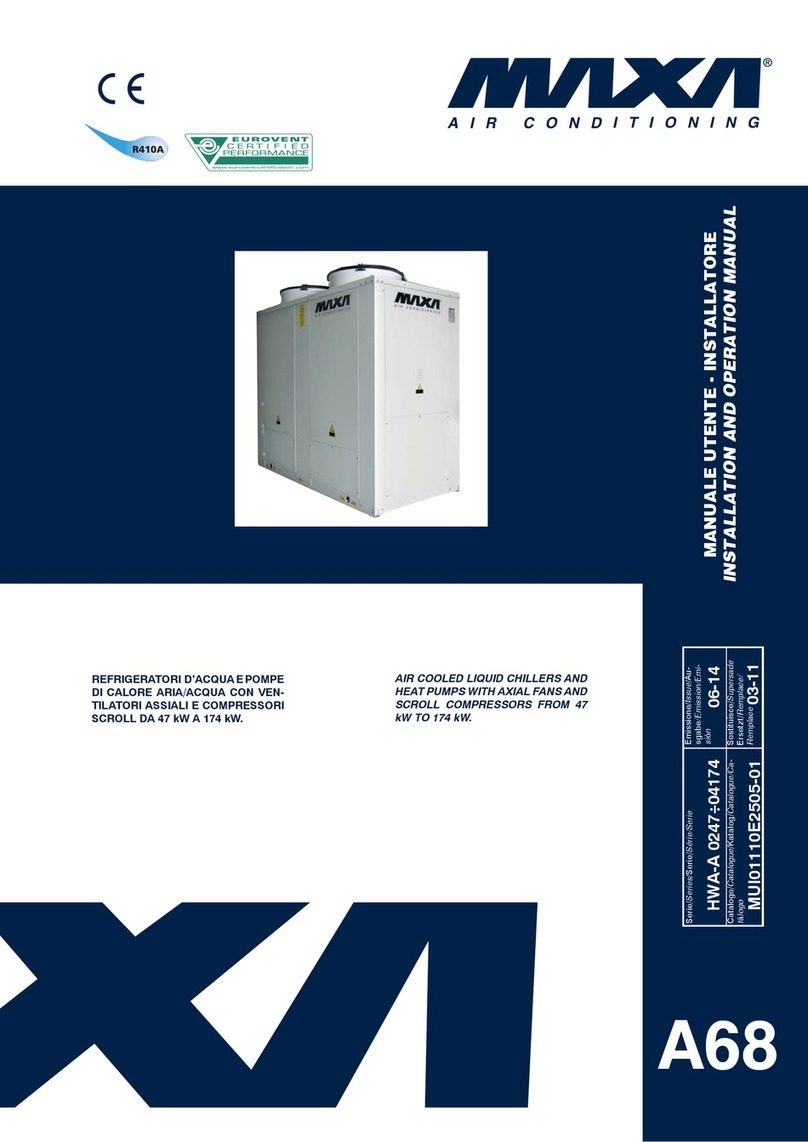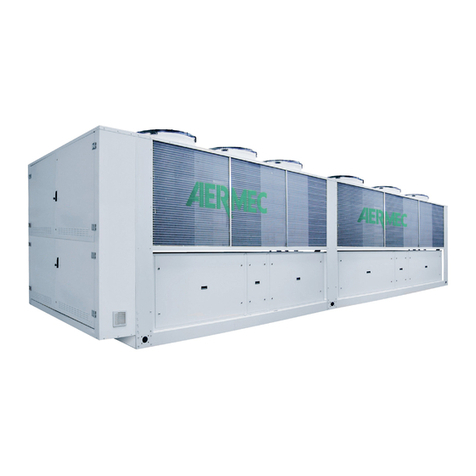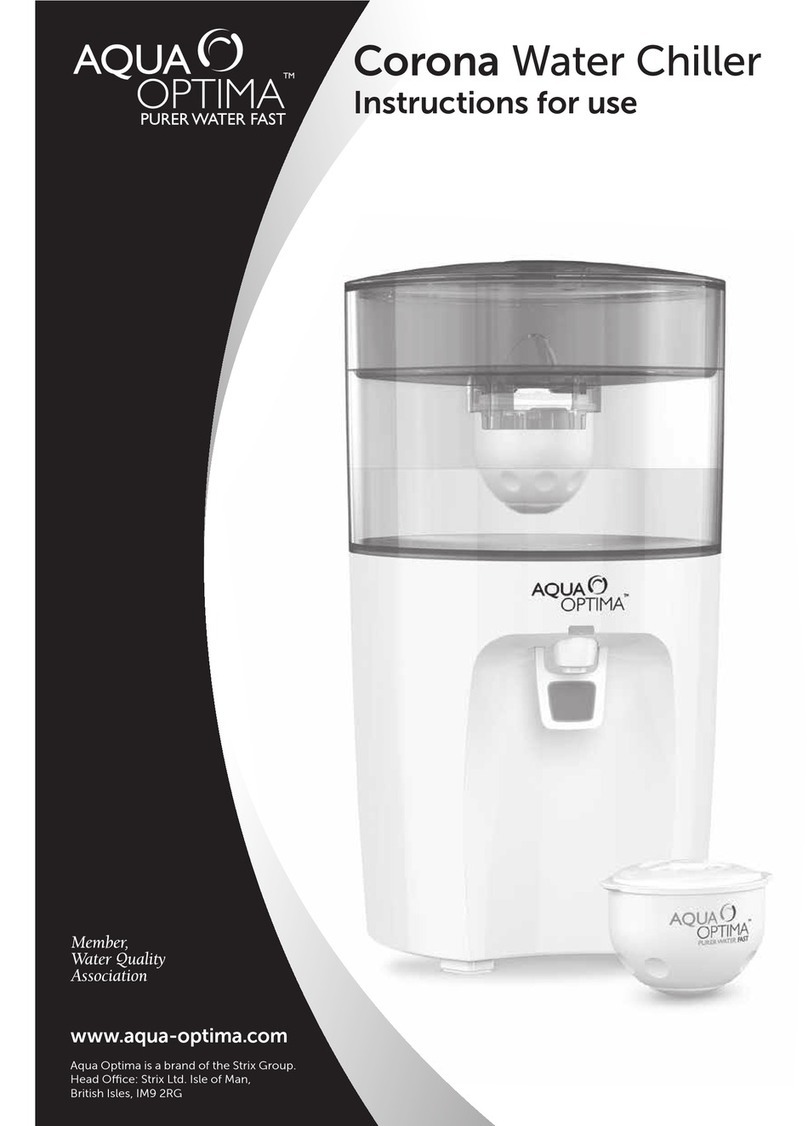
Caution
MAKE SURE NO MORE WATER IS ADDED TO THE TANK.
4. Move the sensor upwards until the water level (0% ice) falls between the minimum and maximum calibration
lines indicated on the sensor tube.
5. Connect transmitter box to power supply, green led “POWER ON” lights up and the sensor starts measuring. If
not, please refer to “Troubleshooting” in this Manual in "ICE LOGIC® Ice Quantity Controller" on the next page.
6. Wait until the LCD-display says “WAITING”
7. Push the red button inside the transmitter box to enter the main menu, indicated on the display. See also
“Programming Mode” in chapter “Operating Instructions – Ice Logic™ Ice Quantity Controller”.
8. Choose “ZERO LEVEL” to enter the calibration menu.
9. Choose “CALIBRATE” to start the calibration.
SYSTEM CHECKS
Before initiating the first ice build cycle, check the following points:
1. Verify the system has been charged with a glycol solution of the type and concentration specified.
2. Confirm all circulating pumps are rotating in the proper direction.
3. Confirm there is sufficient load to discharge the tanks.
4. If any of the units are equipped with a heated enclosure around the operating control and sight tube, check to
ensure the heater and thermostat are wired and operational.
Once the checks are completed, start the initial ice build cycle and monitor the system throughout the cycle,
recording glycol temperatures and noting the duration of the build. Confirm the operating controls function properly
to terminate the build cycle and that once the build cycle is completed, the chiller is shut down and locked out until
the cooling cycle is initiated.
On multiple unit installations, once the initial ice build cycle has been completed, check all the sight tubes to verify
the water levels in each tank are equal. If the inventories are significantly out of balance, the flow rates of the
glycol solution to each of the thermal storage units should be checked and balanced. Then, after the next ice build
cycle, check the sight tubes once again to ensure balance has been achieved
Daily Operating Guidelines
BUILD CYCLE
For the most energy-efficient operation of the system, the controls should be designed to operate the build cycle as
follows:
Once the ice build cycle has been initiated, the glycol chiller(s) should run at full capacity without cycling or
unloading until the storage device is fully charged (recharged). At that point, the chiller and the glycol circulating
pump should be turned off and not allowed to restart until the discharge (cooling) cycle is initiated. Additionally, a
build cycle should not be re-initiated until approximately 15% of the ice has been melted.
DISCHARGE (COOLING) CYCLE
ICE CHILLER®Thermal Storage Units can be discharged in a variety of ways depending upon the system
configuration and objectives of the system designer. Consult the project drawings and specifications for direction
on how the system is to operate during the discharge (cooling) cycle. When the operating strategy calls for
operation of the chiller at any time during the discharge cycle, the operating control(s) used to control the ice build
cycle must be bypassed/deactivated when operating in the discharge cycle.
W W W . B A L T I M O R E A I R C O I L . E U
9
3 Operating Instructions
3 Operating Instructions
